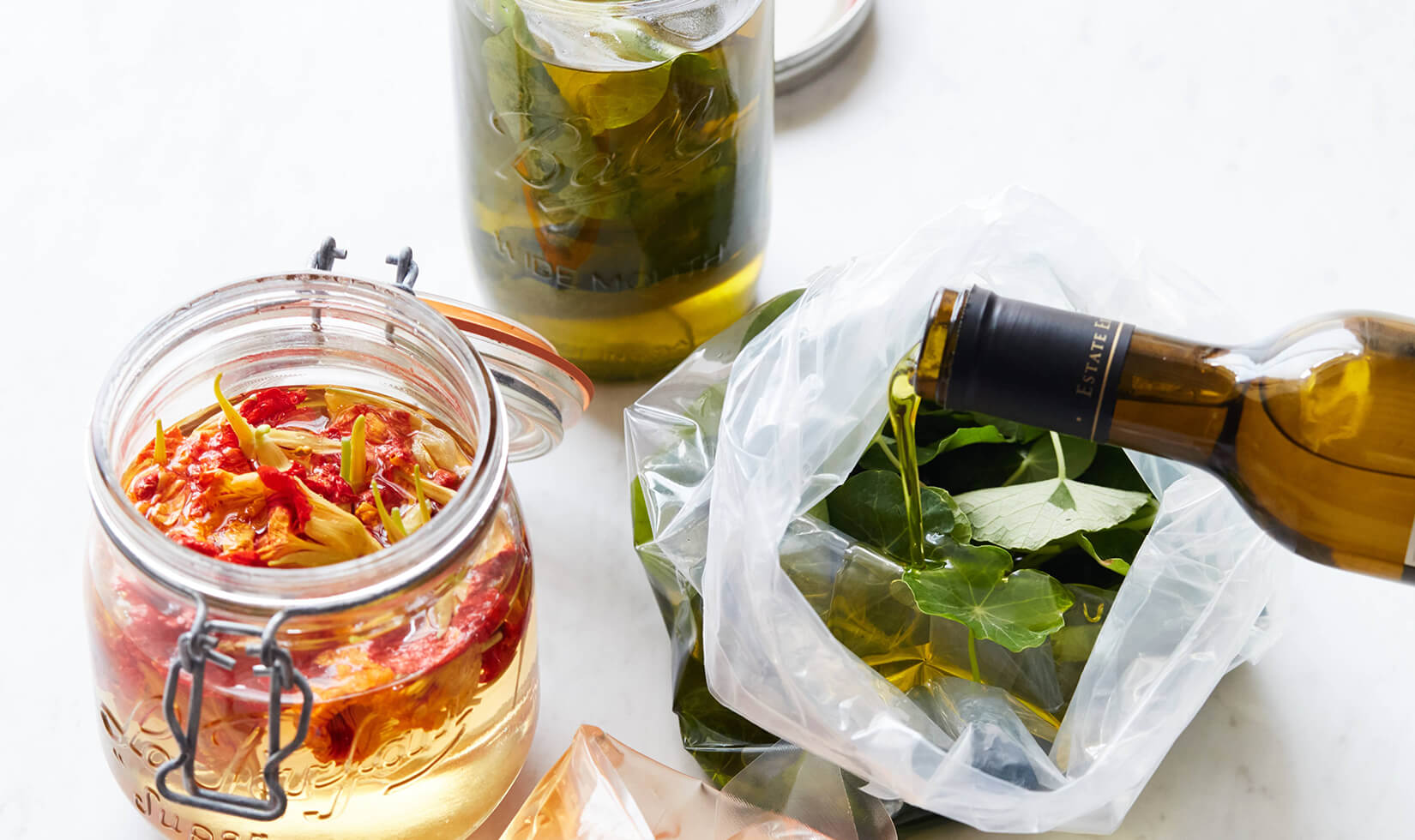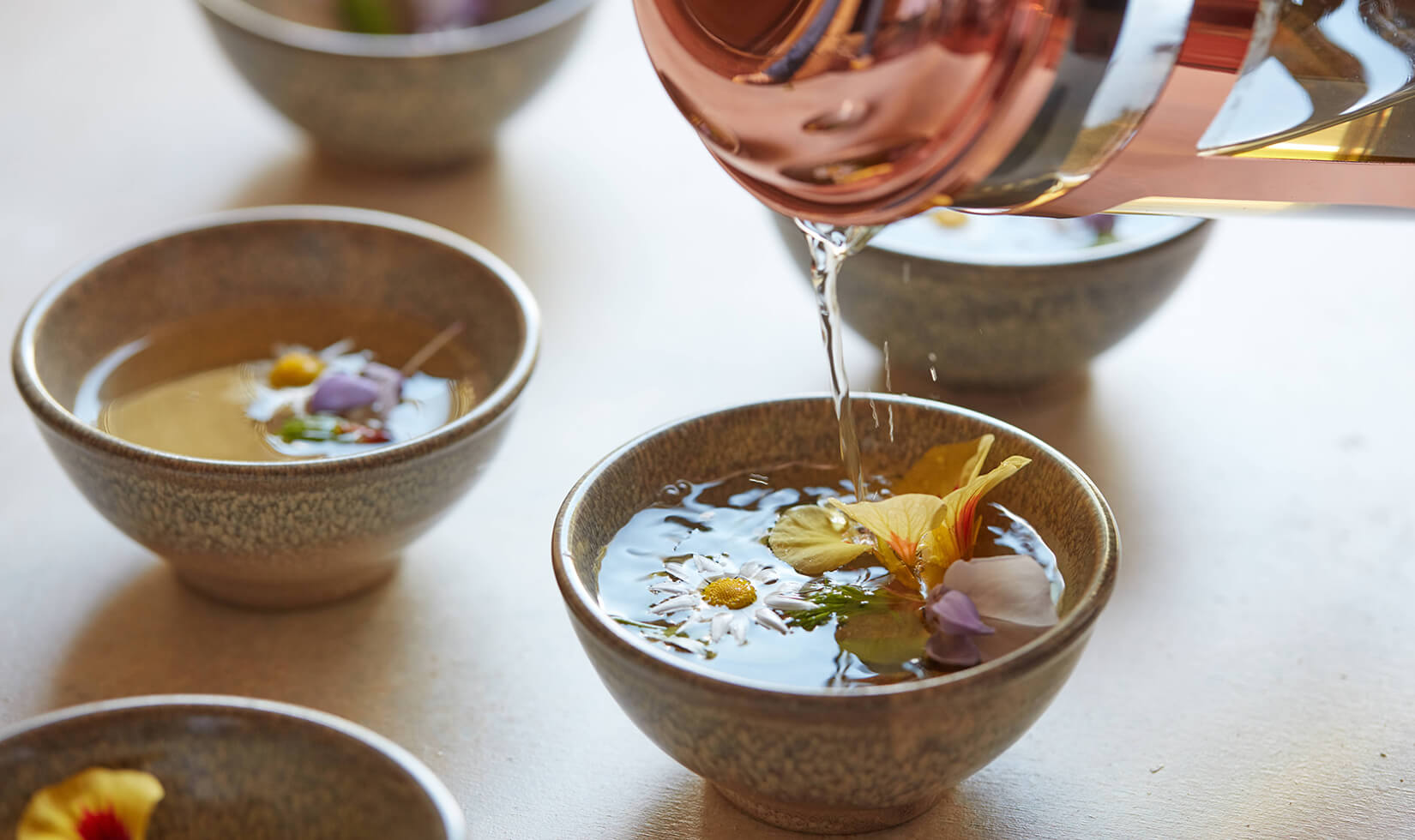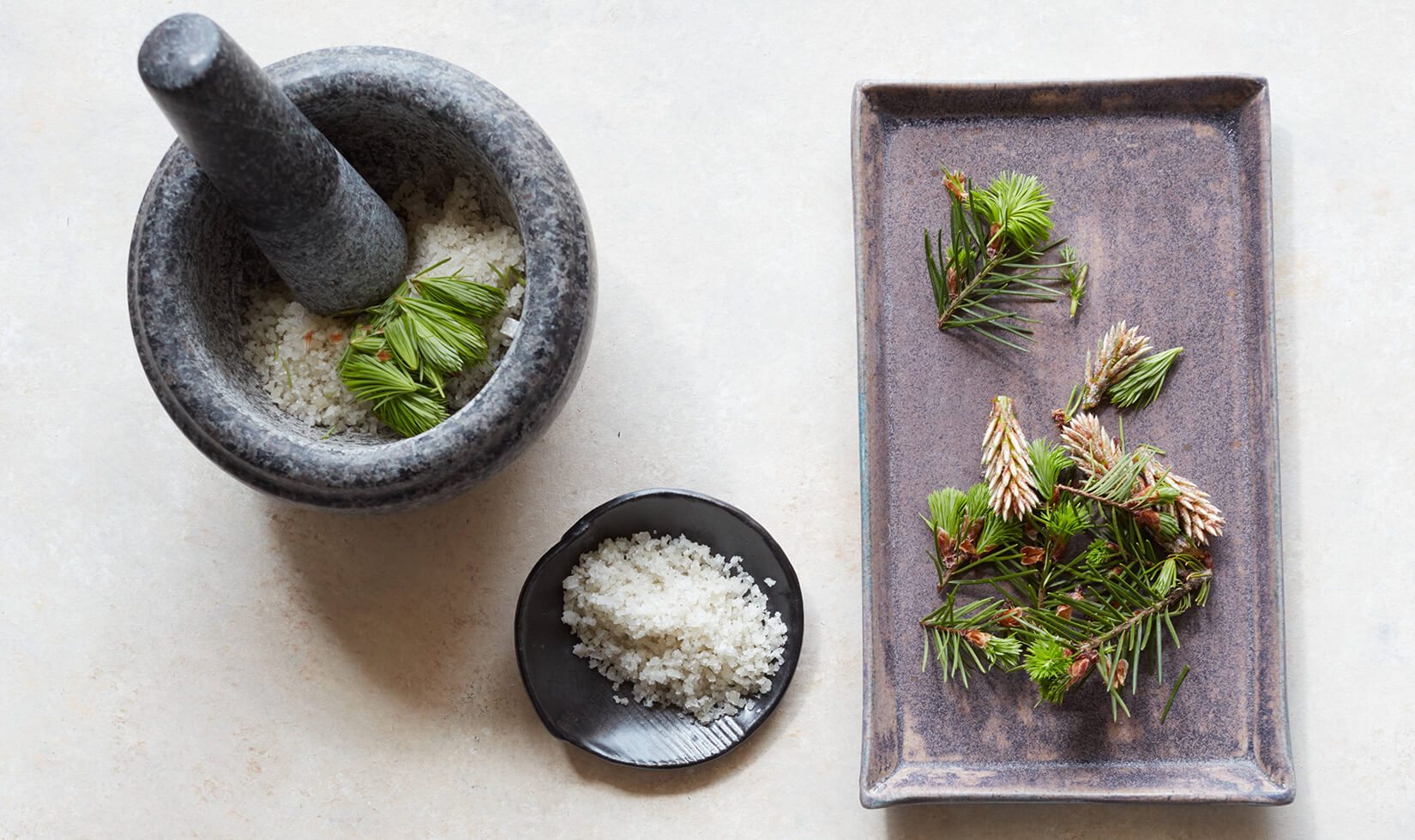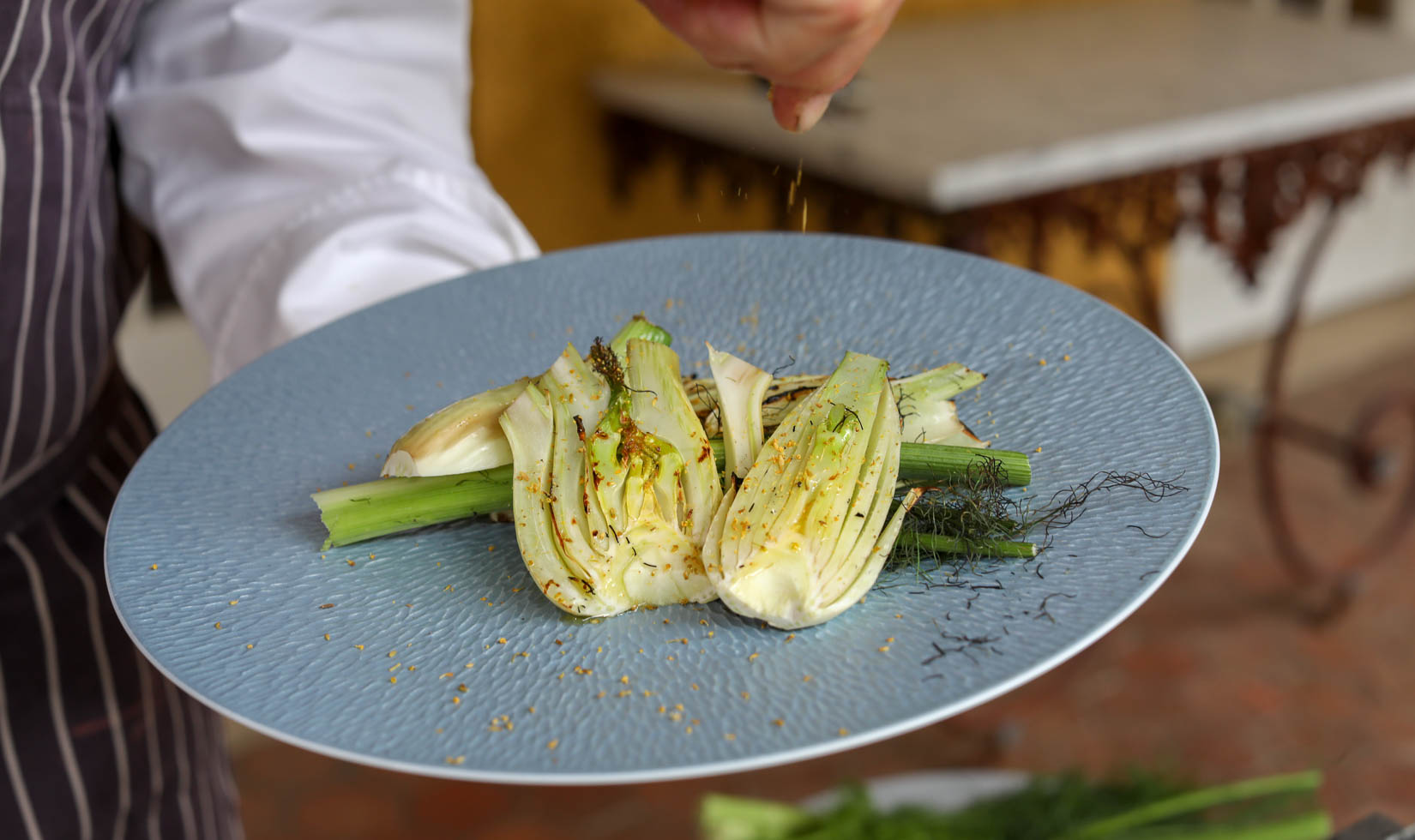Finding beauty in the hills of the Alexander Valley is hardly a difficult task—as residents of Sonoma Wine Country, we decorate our homes and tables with branches of flowering fruit trees, sinuous red manzanita, lichen and other foraged treasures. But to transform visual beauty into fine dining culinary components by foraging edible plants is another task entirely. With a few simple techniques and recipes, any cook can add a local, “exotic” element by foraging edible wild plants, sourced from as close as their own backyard.
The following spring foraging recipes are prepared at the winery during the height of each foraged ingredient’s season and are a perfect introduction to the craft for any enthusiastic forager.

Foraging Edible Plants? Use Them to Create This Nasturtium Vinaigrette
Nasturtium is a common, wild flowering plant available even to those who are foraging edible plants in the city. The colorful and prolific flowers are found in our gardens, parks and in the wild.
I incorporate “volunteer” nasturtium from Jordan Estate into my infused vinaigrette. The foraged flowers and tender leaves bring pepper, spice and jewel tones to summer and fall dishes. Flowers and leaves are harvested, washed, spun dried and separated. I combine the flowers with a cup of verjus and a teaspoon of kosher salt in a one-gallon Ziploc bag and leave them to macerate in the refrigerator for three days. Leaves are placed in a separate one-gallon Ziploc bag, covered in Jordan Estate Extra Virgin Olive Oil, massaged and refrigerated to infuse for one day.
If you’re creating this vinaigrette at home, you can strain each into a separate, sterile mason jar and store for up to two weeks. Use the infused verjus for a pickling project, or combine both into a vinaigrette and drizzle over summer salads or grilled fish. This foraging recipe is as versatile as it is delicious.

Brew Up This Foraged Tea
If you live in Sonoma County and purchase chamomile tea in the spring, I hope you are truly a connoisseur of fine packaging. Fresh tea sings with life. Dried herbal tea from a box now seems like settling. So much is lost.
To make my foraged teas, I use loose guidelines and no precise measurements. I prefer Mountain Valley or Fiji water, which is soft, neutral and rich with silica, and I bring the water to a very conservative brewing temperature of no more than 175° with a brew time of no more than three minutes. Madrone and manzanita bark, easily harvested into perfect cinnamon curls with a pocket knife, bring the earthy, spiced base notes to most teas and are steeped in the first minute of a two-step process. As the water begins to take on color, I add other ingredients, such as wild chamomile, clover, verbena, bay nut, fennel, wild rose and even dried matsutake mushrooms from the coast. When you make this tea at home, let the plants and flowers steep for the remaining two minutes and pour into a tea press before serving.
Just as our wines are grounded in the Alexander Valley, the resulting foraged tea is simple, fresh, and immediately enjoyable, alive with the terroir of your neighborhood.

Capture Spring With This Conifer Salt Foraging Recipe
This striking, emerald finishing salt is magical in its simplicity and ability to “capture” spring in wine country—a blend of coarse sea salt and new conifer buds from around the Jordan Estate. In the spring, the easily identifiable, bright tips of the conifer buds pop against the dark green of the Jordan pine trees. These tips are an excellent source of vitamin C, and they’re only collected during spring when their flavor is sweet and subtle, rather than resinous pine.
Using a rustic mortar and pestle, I pulverize the foraged buds and salt until integrated. The resulting vibrant green seasoning is best used as soon as possible to retain color and perfume. Garnish grilled meats, proteins or vegetables with conifer salt before serving. Combined with marjoram and thyme, this is the finishing salt of choice for Jordan spring lamb.
I hope that our wines and our food inspire you to take on the challenge of creating simple yet delightful culinary masterpieces using edible wild plants.
Take your passion for food one step further and join the Jordan Estate Rewards program, and use your points to redeem toward private tastings, dinner parties and more.



